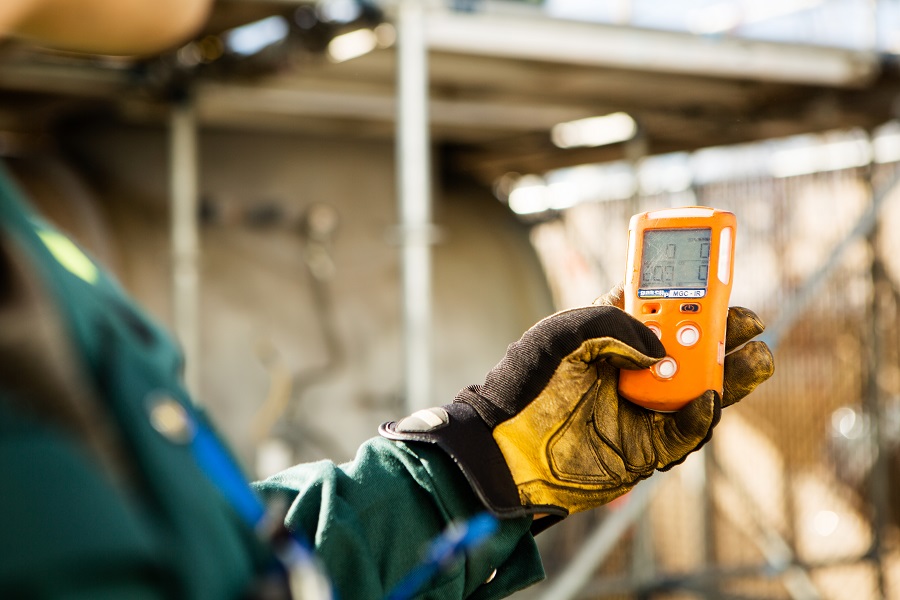Toxic industrial gases can cause serious health issues to workers who are exposed to them. Many of these toxic gases are odorless and colorless and hence go unnoticed and undetected. There are various security levels for every gas, which should be kept normal for the safety of workers and the workplace. However, excess of these gases can cause potential hazards, leaving industrial workers at risk. The best way to detect these gases is to install gas detectors at different points of the workplace. This article will walk you through a few toxic gases and how to prevent them. Keep scrolling to know more!
Harmful industrial gases to watch out for:
Industrial workers may be exposed to several toxic gases. The variety of these gases may differ according to the industry. We have compiled a list of the most common industrial gases that are found normally across every industry. Give this list a read to know what these gases are:
1. Hydrogen Sulfide:
Have you ever heard of sewer gas produced in industries? Sewer gas is the other name of Hydrogen Sulfide (HS) gas. Hydrogen Sulfide (HS) is produced due to decaying materials and smells like rotten eggs. Items like pesticides, plastics, drugs, landfills, and even breweries produce hydrogen sulfide.
The poisonousness levels of hydrogen sulfide discharges are hazardously high, particularly if not discarded as expected. Inward breath of high groupings of H2S can bring about aggravation, unconsciousness, memory decline, or in extreme cases, death.
Security Level: Hydrogen sulfide should not exceed the level of 10 ppm for workers. Moreover, the extreme case is when it is recorded at 100 ppm in any industry. Such exposure can cause lethal consequences for workers.
Read also: Fixed and Portable Gas Detectors
2. Carbon Monoxide (CO):
Carbon Monoxide is the most common toxic gas on this planet. Since it is odorless and colorless, it goes undetected most of the time. However, coal and diesel engines often emit this gas. Commonly found in industrial cycles as a source of energy and diminishing agent, carbon monoxide (CO) is a dull, unscented, and dry gas.
At the point when materials are scorched inappropriately, the emission of carbon monoxide is profoundly toxic. Its toxicity level rises, particularly in confined regions where human exposures can’t be observed. Health impacts like sickness, restlessness, and nausea might be experienced with constant exposure. The best way to detect such gases is to install a gas detection system across the entire industry.
Security Level: The minimum level of CO gas is 50 ppm for eight hours working shift. When the level exceeds 100 ppm, industrialists should pay serious attention since it can cause serious health issues.
3. Nitrogen Oxides:
Nitrogen oxides contain seven different gases, with nitric oxide and nitrogen dioxide being the two most normal structures. Found in various buyer and mechanical conditions, nitrogen oxides are the principal benefactor of air contamination and diminished air quality. Nitric oxide is regularly radiated from vehicles, rural cycles, or as a result of ignitable non-renewable energy sources. In addition, nitrogen dioxide has been utilized to create rocket energizes and explosives.
Exposure to these gases can cause various health issues. As indicated by the CDC, health issues vary from eye, skin, and respiratory tract to intensely deadly conditions. Therefore, industrialists should watch out for these gases across the entire industry.
Security Levels: Health authorities are continually attempting to discover approaches to restrict openness to nitrogen oxides. The current permissible breaking point for nitric oxide is 25 ppm inside an 8-hour work shift, with 100 ppm being promptly deadly. Nearly nitrogen dioxide has a five ppm allowable cutoff and 20 ppm deadly focus limit.
4. Ozone (O3):
Another toxic gas on the list is Ozone (O3). The gas is believed to be common across the cityscapes as smog. Particularly poisonous to vegetation and people, ozone is a gas comprised of three oxygen iotas (O3) and is normally seen as a broad brown haze across cityscapes. It might normally happen in the upper air of the atmosphere.
Chemical reactions from vehicles or fuel fumes add to enormous ozone fixations at ground level. Medical conditions, for example, diminished lung function, respiratory disease, UV overexposure (for example, burns from the sun), or skin disease in people make it a harmful gas that should be observed. Industries can prevent such gases by installing an effective modern-day Gas detection system across the entire workplace.
Security Level: As per OSHA, ozone levels should never surpass the accompanying normal: 0.10 ppm (parts per million) for 8 hours out of each day. While the degree of work may add to the genuine level, outrageous alerts should be managed when working close to ozone for an all-inclusive timeframe.
Secure your workplace/industry with modern gas detectors!
Toxic gases can cause serious health damages to workers and the workspace. It is best practice to take precautionary measures for the general safety of everyone. Want to know the best remedy? Install gas detection systems across the entire industry!

